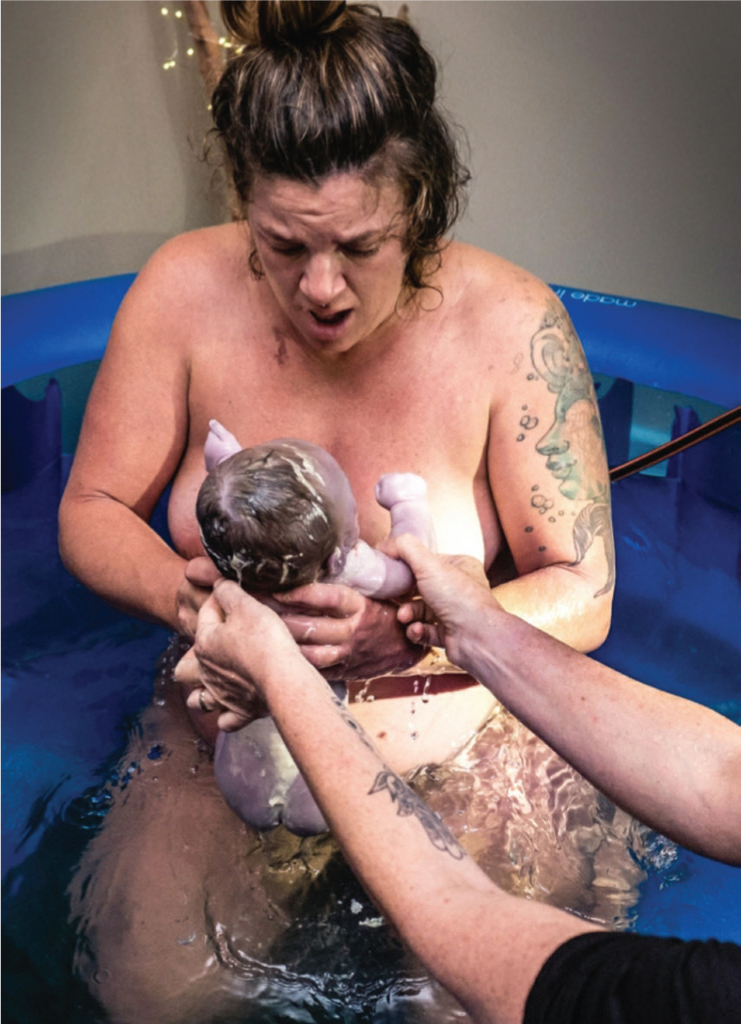There are different ideologies and models in maternity care, each with underlying assumptions and philosophies relating to women and the care provided to them during the childbirth continuum. The underlying philosophy within the medical model is the assumption that pregnancy and birth are pathological conditions that need to be closely monitored and medically managed to avoid catastrophe (Katz Rothman, 1991). In contrast, the ‘midwifery model’ or ‘social model’ of care and its associated philosophy share the common ideology that birth is a normal physiological process that most women can achieve without intervention (Katz Rothman, 1991). Recognising the differences between the different ideologies and their associated philosophies is essential to understanding the way in which maternity care is provided to women. It is also essential to understand that it is not as simple as midwives following the midwifery model and doctors following the medical model, as the health practitioner's philosophy and practice is closely connected to their own personal ideologies and world view. Therefore, many doctors may practice according to the midwifery model and many midwives may practice in accordance with the medical model.
Control and safety in relation to pregnancy and childbirth have different connotations for individual women. The concept of risk has come to dominate all aspects of maternity care, with women assessed and categorised according to their perceived risk level during their first contact with maternity care providers. This risk label attributed to a woman will then define the level and type of care she should—according to the institutionalised maternity care system—receive. Women's autonomy and choices during pregnancy and birth can also be influenced by the perception of risk. The medical model sees birth as risky, with the risks coming from the birthing body, whereas the women who believe in the holistic model of midwifery care believe that childbirth is inherently safe and risk arises from the medicalisation of birth and unnecessary interventions (Holten and de Miranda, 2016; Plested and Kirkham, 2016; Davis-Floyd, 2017). Therefore, to maintain the autonomy of the birthing woman, the concept of risk itself should become part of the dialogue that occurs between a woman and her caregiver, including the perceptions of what constitutes the most risk or the most acceptable risk in birth, as often these are very different (Cameron, 2012).
The concept of the medical system assuming control over the woman's body, rather than the woman retaining control is supported by popular media. Universally, the focus of childbirth generally centres on the birth of a healthy baby rather than the woman's role in the process. The media portrayal of pregnancy and birth has lasting implications for women. Television programs and films represent pregnancy and birth as leading to social embarrassment, causing highly stressed personal relationships and chaos (Kitzinger, 2011). There is currently a lot of fear surrounding birth. Many women hear only horror stories from family and friends, and the portrayal of labour and birth in the media is usually as a life-threatening event. Women's expectations of labour and the perception of how painful birth will be are often gathered from television programs, and other women's stories of giving birth (Carolan-Olah et al, 2015). The general perception is that labour starts with a sudden onset of agonising pain followed by a rush to hospital, where the woman is deposited on the delivery table to be greeted by an eagerly waiting, gowned and masked medical team (Kitzinger, 2011).
 Women's expectations of labour and birth are often based on television programs and other women's stories
Women's expectations of labour and birth are often based on television programs and other women's stories
The widespread notion that childbirth is a pathological process that can only be declared normal retrospectively has led many maternity care providers to conclude that care during normal childbirth should be similar to the care in complicated births. This concept has several disadvantages: it has the potential to turn a physiological event into a medical procedure, and it interferes with the freedom of women to experience the birth of their children in their own way and in the place of their own choice. It also leads to unnecessary interventions and, because of the need for economies of scale, its application requires a concentration of large numbers of labouring women in technically well-equipped hospitals with all the associated costs.
The lack of trust in women and birth and the medicalisation of birth based on risk perception contributes to obstetricians and midwives in using unnecessary medical or ‘just in case’ interventions. This ‘just in case’ care undermines women's belief and trust in their abilities and also leads to midwives losing their trust and belief in birth.
Midwife means ‘with woman’ (Kitzinger, 2011). Midwives are supposed to believe that pregnancy and birth are normal life experiences (International Confederation of Midwives, 2014). Midwives need to trust women and their ability to give birth successfully with little or no intervention; they are prepared to express confidence in women's ability to birth. Midwives need to become wise to the power of media messages and need to use them to their advantage. Midwives know what the research says about birth with a known midwife, so the advantages of midwives and normal physiological birth should be promoted. Birth is a normal, natural function that is designed so well, physiologically, that it rarely needs outside assistance. Many midwives know this intellectually, but it can take time to develop a heart's worth of trust (Eustice, 1991). Midwives need to find that trust in birth and women's ability to ‘do it’. If you do not think she can do it, and the odds are already stacked against her, how will she believe she can do it?


